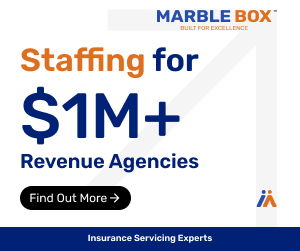Insurance Agencies should consider compiling their book of business reports and analytics to learn more about their book of business for several purposes, including marketing, management and for those looking to sell their agency.
Agency analytics should always be a part of an agency profile report or prospectus when an agency is being put on the market. Also buyers should be asking for this information as this will help the buyer evaluate the agency and the price they are willing to pay. Here are some useful analytics to give a good snapshot of an agency:
Book of business report by client
This report breaks down the entire book by client, listing the client name on one column of the spreadsheet, and a list of their policies in another column. This report should also include policy type, premium, commission and carrier. Each client is subtotaled for premium and commissions, and the entire book’s totals for those items should appear at the very bottom. In addition to the basic household and policy information, also include the occupation (business type for commercial clients) and city for each client as this will help give a better picture of the book, most especially when analytics are part of an agency profile report.
Book of business report by carrier
This is a simple report that indicates how much premium and commissions an agency has by carrier. Subtotals of admitted business and non-admitted business outline what percentage of the premium and commissions are admitted or non-admitted. This type of report will help an agency better understand what is needed to reach profit sharing of any book; it will also help a potential agency buyer see how well the book fits in with its existing book, what appointments would be needed, and what book can be rolled into another carrier.
Average policy count per household
This statistic takes the total number of policies and divides it by the number of clients, giving an average policy count per client. This is very important because it is an indication of account-rounding and cross-selling within the agency. A good agency has cross-sold their accounts; this is an indication that there is a good relationship between an agency and its clients and programs to make sure cross selling is occurring from the very initial relationship with the client. A good agency should have a least a 2.0 average policy count per household, and anything less than 1.5 indicates that there was very little cross-selling efforts and the agency is vulnerable to losing clients. The goal of this report is to exhibit both the agency’s target client group success and opportunity for growth through cross-selling.
Average premium per policy
Knowing your average annual policy premium is key information that both buyers and agency owners should know about a given book of business. For buyers, an average premium that is too low may not have the best return on investment initially, but may or may not have better long term policy life since lower premium policies get tend to get shopped less at renewal. A low average premium with too many single line households may be a red flag, while low average premiums with a high average policy count per household my be an indication of a solid book. Nevertheless, they keys here are the cost to service and the type of accounts. A book of contractors with low premium policies may require many certificates, yet a book of professional offices will likely require less serving and a lesser amount of work when the policy is renewing. Thus, this report can provide an agency assessment by comparing the average policy count, type of accounts, and the average policy premium.
Breakdown by line of business
The basic breakdown of an agency is to break it down by Commercial, Personal, and Benefits (all LH&D lines). This breakdown by line of business should consist of two reports: one for premiums and one for revenue (commissions). Each of these can and should be broken down further; for example, personal lines should be broken down by auto, home and umbrella. Commercial lines and Benefits should also be broken down by each policy type. This helps better show what markets the agency services and where growth opportunities exist.
Location of accounts
A location list should be done by city in one column and the number of accounts in the next column. It may best to sort this on a spreadsheet by top ranked first and then in ranking order below that. Understand the location of the accounts is important from both a geographical as well as a demographical standpoint. This information is probably most important for a merger or acquisition with two firms located in separate areas. Also, it will help those who seek to acquire an agency based on client location.
Accounts by premium size
This breaks down premium size into categories and the number of accounts in each category. Here is a sample:
|
Account Size By Premium |
Count |
|
100k+ |
7 |
|
50k to 99k |
11 |
|
25k to 50k |
14 |
|
20k to 25k |
18 |
|
15k to 20k |
47 |
|
10k to 15k |
63 |
|
7.5k to 10k |
83 |
|
5k to 7.5k |
102 |
|
2.5k to 5k |
105 |
|
1k to 2.5k |
182 |
|
Under 1k |
209 |
Depending on the book composition of an agency, this can be further broken down by personal and commercial lines. This report is useful for management because it will help make management decisions on who to assign certain size accounts to; it may be also of use for those agencies that have a premium size or revenue minimums to evaluate further management decisions.
Accounts by revenue size
This report would be nearly identical to “Accounts by premium size” except the right hand column of the chart would be based specifically on revenue (commission) size. In many agencies, especially those that do benefits in addition to P&C, commission rates are different and in many cases, higher premium benefit accounts may not bring in as much revenue as P&C accounts.
Largest Clients
This is a list of an agency’s largest clients, and can be done either by premium or revenue size, and perhaps it a good idea to have a list of each. For commercial clients, the list should include the business type; for personal clients, the list should include the client’s occupation. This list is key for any agency, as these are the accounts that should be assigned to the agency’s best staff, if not the agency principals. These are the clients who should be on an agency’s radar during the holidays, as well as scheduled individualized contacts throughout the year, maybe even including personal visits by agency principals. For those buying an agency, these are the clients with whom a new agency owner should want to get acquainted within the first month of the transaction date. For prospective buyers, this list helps determine if the agency meets the criteria they are looking for and will help determine the value of an agency to a buyer.
In addition to analytics, supporting documents from carriers, including loss ratio reports for all carriers with whom the agency is appointed should be included. This is a segment of what should be in a full agency profile report. Nevertheless, what I like about analytics is that they provide a snapshot of an agency, whether it is for someone looking to buy your agency, an insurance carrier, an insurance cluster or for your own management purposes.
Looking to start an Agency? Get detailed information by reading our Guide to Starting an Insurance Agency











